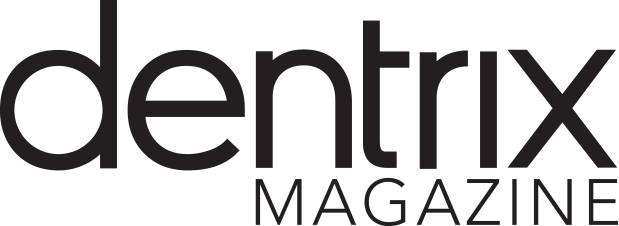Learn how to use Perfect Day Scheduling to help you achieve your profitability goals and make your schedule more efficient at the same time.
Updated 6/30/20
‘Would you tell me, please, which way I ought to go from here?’ `That depends a good deal on where you want to get to,’ said the Cat. `I don’t much care where–’ said Alice. `Then it doesn’t matter which way you go,’ said the Cat. (Alice’s Adventures in Wonderland, Lewis Carroll)
All too often dental offices take Alice’s approach when it comes to scheduling patients. Instead of setting clearly defined goals to work toward, offices schedule patients willy-nilly, looking for the first available appointment time without considering the need to build a profitable and efficient day. The result is a busy, stressful day that may not get them closer to their vision of success.
Scheduling for production is a different approach. It creates a clear map to your profitability goals. When you schedule for production, you reserve time in your appointment book for certain types of procedures. As Cathy Jameson, CEO of Jameson Management, puts it in her Scheduling for Productivity, Profitability, And Stress Control webinar, “Scheduling for production doesn’t mean that all you’re interested in is money. Not at all. It means that in equalizing the productivity of your days you will have smoother days, less stress and will end up with a great month.”
The Perfect Day Scheduling feature makes it easy for you to schedule for production. With Perfect Day Scheduling, you can set up “time blocks” to reserve space for specific procedures in your Appointment Book.

The system reminds you that the time is reserved for those procedures both visually and with alerts.
Creating Appointment Types
To begin, decide what types of appointments you want to block time for in your Appointment Book. For example, in his Set Your Practice on Fire webinar, Dr. Roger Levin recommended that you set up your schedule to book “major production” services in the morning with the goal of achieving 60 — 65% of your daily production in that block. Similarly, in her productivity webinar, Cathy Jameson suggested that you pre-block for “primary procedures” and then work in your “secondary” and “tertiary” procedures around that block. (These and other profitability topics can be viewed in the Dentrix Resource Center.)
After you’ve decided on your appointment types, you’ll need to add them to Dentrix so that you have a list to choose from when creating time blocks and appointments. From the Office Manager, click Maintenance > Practice Setup > Definitions. Click the Definition Type drop-down menu and select Appointment Types.

Add new types or change the existing types as necessary.
Creating Time Blocks
Once you’ve set up the appointment types you want, you’re ready to begin blocking time in the Appointment Book. Blocks are set up by provider. From the Appointment Book menu, click Setup > Provider Setup. Select the provider whose blocks you want to set up and click Setup. From the Provider Setup dialog box, click the Add button under Set Time Blocks. The Block Settings dialog box appears.

You should assign a name, a color, days of the week, time range, operatory, and appointment type to each block. Repeat this process for all providers and blocks that you want to use in your schedule.
Enabling Perfect Day Scheduling
As a final step, you need to turn on Perfect Day Scheduling. In the Appointment Book, click Options > Perfect Day Scheduling. You should now see the time blocks you created in the operatories of your Appointment Book. This serves as a visual cue to remind you that these times are blocked for the production types you set up.
Scheduling an Appointment
To schedule an appointment in a time block, double-click the start time as you would to schedule any appointment. Enter the necessary appointment information. Before clicking OK to save the appointment, click the Type drop-down menu and select the appointment type for this appointment. The appointment type should match the block type you’re scheduling. (See sidebar, “Attaching Procedures to Appointment Types”.)
If you forget to assign the appointment type or you try to schedule an appointment for a different type of production, a warning message will appear. You can choose to return to the Appointment Information dialog box to assign the proper type or you can choose to schedule the appointment anyway. (Keep in mind, there will be times where you’ll need to schedule an appointment in a time reserved for something else and Dentrix allows you to over ride the block for those situations.)
By using the Perfect Day Scheduling feature, you take the guesswork out of scheduling and put your office on track to have a more profitable and less stressful month.
Attaching Procedures to Appointment Types
You can save a step when scheduling for a blocked type of appointment by linking appointment types to procedure codes. When you select a linked code as the reason for the appointment, the appointment type will automatically appear in the Type field of the Appointment Information dialog box, saving you from manually selecting the appointment type in order to schedule the appointment in a time block.
To associate appointment types with procedure codes, from the Office Manager, click Maintenance > Practice Setup > Procedure Code Setup. Select the desired procedure code and click Edit. The Procedure Code Editor dialog box appears. Click the Appointment Type drop-down menu and select the appropriate appointment type. Click Save.
Learn More
Read Scheduling for Higher Efficiency, Production, and Profit for more ideas about improving your scheduling processes.
To learn more about using Perfect Day Scheduling, see the Perfect Day Scheduling Overview topic in Dentrix Help.
By May Wescott, Contributing Editor
Originally published in Dentrix Magazine, Fall 2011





